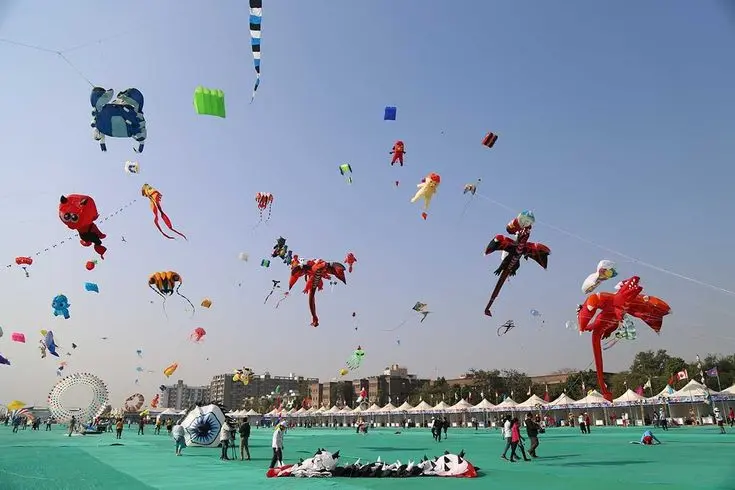
Table of Contents:
- Introduction to Makar Sankranti
- The Significance of Makar Sankranti
- Makar Sankranti Celebrations Across India
- Uttarayan in Gujarat
- Pongal in Tamil Nadu
- Lohri in Punjab
- Magh Bihu in Assam
- Khichdi Parv in Uttar Pradesh and Bihar
- Rituals and Customs of Makar Sankranti
- Festive Delights: Traditional Foods of Makar Sankranti
- Heartfelt Greetings and Wishes for Makar Sankranti
- Conclusion: Embracing the Spirit of Makar Sankranti
1. Introduction to Makar Sankranti
Makar Sankranti is one of the most vibrant and auspicious festivals celebrated across India. It marks the sun’s transition into Capricorn (Makara) and signals the end of the winter solstice. This harvest festival is not only a celebration of agricultural abundance but also a cultural extravaganza filled with joy, traditions, and social bonding.
2. The Significance of Makar Sankranti
Makar Sankranti holds immense spiritual and agricultural importance. It signifies the arrival of longer days and the beginning of the harvest season. Across India, people observe this day with prayers, charity, and festive gatherings, symbolizing gratitude and prosperity. The festival is also associated with the concept of renewal and the victory of light over darkness.
3. Makar Sankranti Celebrations Across India
Uttarayan in Gujarat
Gujarat comes alive during Uttarayan, with the sky adorned by thousands of colorful kites. Families gather on rooftops for friendly kite-flying competitions, accompanied by music and traditional sweets like sesame chikki and undhiyu. The International Kite Festival in Ahmedabad attracts enthusiasts from around the globe.
Pongal in Tamil Nadu
In Tamil Nadu, Makar Sankranti is celebrated as Pongal, a four-day festival that honors the Sun God. The festivities include cooking the traditional dish “Pongal,” made from newly harvested rice and jaggery. Homes are decorated with kolam (rangoli), and people exchange warm wishes and gifts.
Lohri in Punjab
Lohri, celebrated on the eve of Makar Sankranti, is a joyous festival in Punjab. People gather around bonfires to sing folk songs, dance the bhangra, and enjoy treats like popcorn, rewri, and gajak. It is a time to celebrate the winter harvest and express gratitude.
Magh Bihu in Assam
In Assam, Magh Bihu is celebrated with community feasts, bonfires (Meji), and traditional games. The festival reflects the agrarian lifestyle and features delicious dishes like pitha (rice cakes) and fish curry. People come together to share food and enjoy cultural performances.
Khichdi Parv in Uttar Pradesh and Bihar
In Uttar Pradesh and Bihar, Makar Sankranti is known as Khichdi Parv. Devotees take holy dips in the Ganges, offer prayers, and prepare khichdi (a dish made of rice and lentils) as a sacred offering. Charity and community meals are integral parts of the celebration.
4. Rituals and Customs of Makar Sankranti
The festival is marked by diverse rituals that vary by region but share common themes of purification, gratitude, and community. Key customs include:
- Taking a holy dip in rivers, especially the Ganges, to cleanse oneself spiritually.
- Offering til (sesame) and gur (jaggery) to deities and the less fortunate.
- Flying kites to symbolize freedom and joy.
- Preparing and sharing festive delicacies.
5. Festive Delights: Traditional Foods of Makar Sankranti
Food plays a central role in Makar Sankranti celebrations. Some iconic treats include:
- Tilgul (Maharashtra): Sweet sesame and jaggery balls symbolizing sweetness and unity.
- Pongal (Tamil Nadu): A sweet and savory rice dish cooked to honor the Sun God.
- Chikki (Gujarat): Crunchy peanut and sesame brittle relished during Uttarayan.
- Khichdi (North India): A wholesome mix of rice and lentils, shared as a symbol of togetherness.
6. Heartfelt Greetings and Wishes for Makar Sankranti
Celebrate Makar Sankranti by spreading joy and warmth through these heartfelt wishes:
- “May the festival of Makar Sankranti bring happiness, health, and prosperity to your life!”
- “Wishing you a sky full of kites and a heart full of joy this Uttarayan!”
- “May the sweetness of til and jaggery fill your days with love and positivity. Happy Makar Sankranti!”
- “Celebrate the spirit of togetherness and gratitude this harvest season. Happy Pongal!”
7. Conclusion: Embracing the Spirit of Makar Sankranti
Makar Sankranti is more than a festival; it is a celebration of nature’s bounty, cultural unity, and the triumph of light. Whether it’s flying kites in Gujarat, dancing around bonfires in Punjab, or savoring festive delicacies across India, the spirit of Makar Sankranti unites us all in joy and gratitude. Embrace the warmth of this auspicious occasion and share its blessings with everyone around you. Happy Makar Sankranti!
